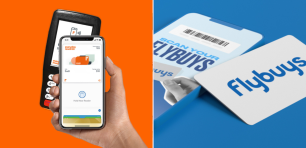
Methodry founder Nathan Baird. Source: Supplied
Innovation is one of the most important endeavours of modern times. It creates growth for organisations and entire economies, improves people’s lives, and creates meaning and fulfilment, but it is hard, and our success rates are mediocre to poor.
One proven way to increase your chances of innovation success is to design and embed common frameworks, processes, tools and language across your teams and organisation. Having a common ‘way of innovation’ connects teams and helps them work together better to achieve success.
Over the years I’ve been lucky enough to help teams in multiple industries and organisations design and embed innovation frameworks, processes, and playbooks, including the big banks, Big Four consultancies, breweries, fast-moving consumer goods companies, fitness companies, national sports institutes, and universities. Here are my six key ingredients for successfully designing and embedding innovation frameworks.
1. Adopt a user-centric design approach
Designing and embedding innovation frameworks and processes is much the same as designing and launching a new product or service. Be sure to take a user-centric, creative and experimentation-driven approach here too.
Start by understanding the needs and pain points of the teams who will be using the frameworks, as well as their customers’ and stakeholders’ needs, pains and desires.
Stimulate fresh thinking in the design stage by exploring best and different practices from a diverse range of industries. This will ensure you look and think beyond your current ways of working and receive provocation and fresh ideas on what might be possible.
Prototype, test and iterate the framework with a subset of your users before locking down the final design and scaling across the teams. Allow time, budget, and flexibility to iterate on learnings.
2. Gain senior leader engagement
Leadership is the number one driver of innovation and growth. Leaders are the only ones who can give complete permission, support, and resources to new initiatives. Having the best frameworks in the world will mean nothing without the ownership and support of leaders.
You can create this ownership and support by involving senior and middle management in upfront stakeholder interviews, reviews of high-level designs and ongoing feedback loops during testing.
Leaders also play a critical role in the adoption of new methods through both endorsing and role modelling the use of the frameworks, as well as removing barriers to adoption and changing KPIs if necessary.
3. Take an ecosystem approach
Consider the rest of the innovation ecosystem. What is the role of the frameworks within the entire ecosystem? How will you integrate with the other key elements of the ecosystem like strategy, resources and funding, structure, people, and space? How might we best align it with our current ways of doing business? How might we make it a part of the everyday?
4. Be truly cross-functional
Not only should you take a cross-functional team approach to designing your frameworks, but they should be designed to encourage and unleash a cross-functional approach to innovation.
The most innovative organisations work in true cross-functional teams with all departments being represented right from the start through to launch. And whilst their involvement dials up and down throughout the innovation journey, depending on their technical expertise, there is continued commitment and momentum from this early and ongoing buy-in. In a study of 2000 product innovation projects, Robert G. Cooper identified that working in true cross-functional teams was the 5th top innovation success factor.
5. Embed through training, coaching and facilitation
A key aspect of embedding the new framework will be educating and training the users in the framework and the supporting skills, tools, and mindsets. Learning by doing through real-world challenges is a great way for participants to learn these new ways of working.
Every person needs a strong reason, as to “why am I here?” and “What’s in it for me?” All participants should have a pre and post-training meeting with their line manager to cover these key questions, as well as individual goal setting for the training. This helps avoid having lots of “hostages” and “holidaymakers” in the training sessions and increases the number of motivated learners.
Follow-up coaching helps users embed the learning and problem-solve barriers to adoption as they pop up. This is something many Agile transformations do well with dedicated coaches and scrum masters being deployed.
6. Engage the art of storytelling
People will need convincing and will be asking questions like “Show me the proof this stuff works” and “Give me the confidence I’m not going out on a limb”. Storytelling will be a key tool in answering these questions and creating buy-in and momentum throughout the journey.
Nathan Baird is the founder of customer-driven innovation and growth firm Methodry and the author of Innovator’s Playbook: How to create great products, services, and experiences that your customers will love!
Handpicked for you

‘Very, very important’: What Aussie businesses can learn from the best loyalty programs



COMMENTS
SmartCompany is committed to hosting lively discussions. Help us keep the conversation useful, interesting and welcoming. We aim to publish comments quickly in the interest of promoting robust conversation, but we’re a small team and we deploy filters to protect against legal risk. Occasionally your comment may be held up while it is being reviewed, but we’re working as fast as we can to keep the conversation rolling.
The SmartCompany comment section is members-only content. Please subscribe to leave a comment.
The SmartCompany comment section is members-only content. Please login to leave a comment.